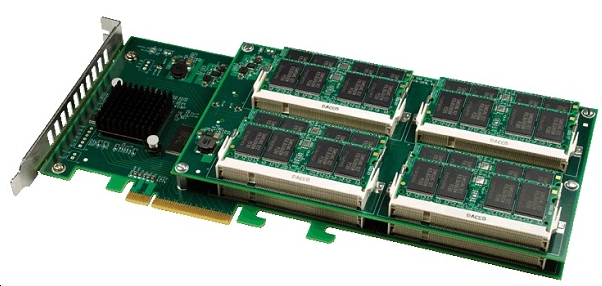- Related articles
- 10 Gigabit Ethernet Standards for Optical Fiber Networking
- Optical Transceivers for Cisco N3K-C3172TQ-32T Switch
- What is 1000BASE Transceiver?
- Cisco Catalyst 6500 WS-X6816-GBIC Expansion Module 16-Port Gigabit Ethernet
- All Cisco DS-CWDM-1470's information (List price, Specs, Datasheet PDF, Compatibility matr
- Optical Transceivers for Cisco N9K-C9372TX-E Switch
- Difference between 10BASE T and 100BASE T
- Optical Transceivers for Cisco IE-3010-16S-8PC Switch
- All Cisco DS-CWDM4G1470's information (List price, Specs, Datasheet PDF, Compatibility mat
- All Cisco WS-G5487’s Information (Overview, Features, Data Sheet PDF, Price, Specification

PCIe SSD technology is the latest incarnation of the solid-state drive revolution sweeping the data center. For the most part, SSDs in the data center have used conventional storage interfaces designed to support mechanical drives, but recently drives have been developed for the high-speed PCIe bus interface.

PCI Express SSD
A solid-state drive, or “SSD”, is much faster than a traditional hard disk drive (or “HDD”). SSDs have been around for a while, but a new breed of SSD, called PCIe SSDs, are slowly starting to rise. But how are they different than normal SSDs?
SSDs use internal flash chips to house your files, while HDDs use a physical, spinning disk to keep everything contained. The benefits of SSDs over their older HDD counterparts are numerous, including a more compact size, lower power requirements, and much faster speeds across the board–which means your computer, will boot and launch programs faster. But PCIe SSDs take it a step further, by using one of the highest bandwidth channels in your PC for blindingly fast speeds.
PCIe SSD vs SATA SSD
One of the more interesting developments in the SSD market recently is the introduction of new drives that connect to servers and storage arrays through Peripheral Component Interconnect Express (PCIe).
What makes these drives so interesting is the fact that PCIe is essentially the backplane. By effectively bypassing the SATA or SAS controllers, PCIe drives basically plug right onto the backplane of the server, making speed is the big advantage held by PCIe SSDs over other types of SSDs.
Each PCIe Gen 3 lane can move data at speeds up to 985 MB per second, and some vendors are shipping 20-lane PCIe-based storage devices. That’s blistering fast, and is the main reason why PCIe-based SSDs are being called upon to serve data-heavy, low-latency content, like streaming video.
While SATA-based Flash drives are becoming ubiquitous as HDD replacements in servers, many enterprises eyeing SSDs are turning to drives based on SATA’s close cousin, the Serial Attached SCSI (SAS) interface.
SAS drives hold several advantage over SATA drives when it comes to enterprise storage. For starters, the latest SAS format, SAS-3, can move data at speeds up to 12 Gbits, which is twice as fast as SATA drives. SAS also delivers less hardware overhead, which is important when latency of data exchange and the number of input/output operations per second (IOPS) becomes an issue. SAS drives also feature more highly configurable reporting structure, and deliver better overall end-to-end data integrity than SATA drives.
But the most important difference between SAS and SATA drives is that SAS drives support multiple data paths, which can provide greater data-path redundancy and high availability. That’s the key reason why SAS-based SSDs are generally favored over commodity SATA drives in enterprise settings.
Summary
PCIe SSD is also a suitable technology for loading databases to significantly increase performance. A few years ago, operating system vendors touted the possibilities of the increased memory addressing afforded by 64-bit computing, but who has the money for vast arrays of online memory? DRAM and flash-based SSDs are the next best option, especially if feeding data to RAM over a fat pipe. But most SSDs suffer from the same constraint, which is that a single bit of memory can only be rewritten a set number of times before it fails. However, SSDs generally include firmware to handle tasks such as error handling, which mitigates that problem.





































































